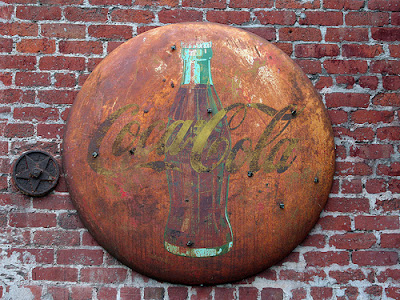 Image of San Francisco taken a few minutes ago from WEBCAM
Image of San Francisco taken a few minutes ago from WEBCAMSan Francisco, California
Play word association and what does it suggest to you ?
Earthquakes ? (1906 and more recent...)
For a great discussion of this event, and more recent events, try Simon Winchester's book: "A Crack in the Edge of the World" - follow the link by clicking the page to see some maps and read an extract from the book...
 Golden Gate Bridge
Golden Gate Bridge Image by Flickr user Mumbley Joe under Creative Commons
Image by Flickr user Mumbley Joe under Creative CommonsThe Golden Gate bridge is one of the most recognisable symbols of the city. It costs $5 to cross (although tolls are only collected in a southbound direction) It is vital for traffic as the only alternative is a trip of several hundred kilometres around the bay. Over 12oo people have unfortunately decided to take their own lives by jumping off the bridge. Any damage to bridges in San Francisco, such as the problems with the Bay Bridge following the 1989 earthquake.
As with Hamilton, San Francisco is also famous for its fogs.
Interestingly, a search for San Francisco Fog brings you to the details of the gay rugby team of the same name !
Alcatraz Island: The Rock
San Andreas Fault - Mark didn't leave the threat of earthquakes behind when he left New Zealand...
The car chase in BULLITT.
In-N-Out Burgers
 Image of In N Out Burger by Flickr user Slice under Creative Commons
Image of In N Out Burger by Flickr user Slice under Creative CommonsRather nice looking burger from a local burger chain.
Fisherman's Wharf
 Image by Flickr user Leo Reynolds under Creative Commons
Image by Flickr user Leo Reynolds under Creative CommonsThe Cable cars
The crooked LOMBARD STREET

Mark's tracker has JUST woken up in Daly City, down by the coast, and a place which apparently has an issue with coastal erosion. (Article from the Bay Nature Journal)
The steep sandy cliffs from Ocean Beach in San Francisco south to Pacifica are composed of sedimentary rocks so young and weak, geologically speaking, that they hardly qualify as rock. At most a couple of million years old, they consist of particles that are only weakly compressed and cemented together. A brush of the hand sends sand grains down to the beach. A heavy rain brings them cascading down from the cliffs in a torrent. An earthquake starts a landslide. This is a landscape in motion. Flowing cliffs have been the story in these rocks for as long as people have lived along this coast. And long before that.
Rates of erosion in these rocks can average up to two to three feet a year. That doesn't mean two feet every year; it is an average rate of erosion over the past half century or so in which measurements have been made. Decades may pass with little erosion, relaxing concern about living at the edge of the sea. But in El Niño winters, coastal erosion can be rapid and severe. El Niño events bring a warming of ocean temperatures that can result in heavy rain in California (and drought elsewhere). In a major El Niño storm, especially if it occurs during a time of high tides, waves crash against the sandy San Mateo cliffs. Ten or 20 feet of backyard may be lost in a few days or weeks, and houses set back from the cliff 40 years ago may dangle over the edge.Coming up: an American adventure...
San Francisco, CA, to Santa Barbara, CA - 378.5mi
Santa Barbara, CA, to San Diego, CA - 246.5mi
San Diego, CA, to Tempe, AZ - 425.5 mi.
Tempe, AZ, to El Paso, TX - 540 mi.
El Paso, TX, to Del Rio, TX - 451.5 mi.
Del Rio, TX, to Navasota, TX - 431.5 mi.
Navasota, TX, to St. Francisville, LA - 423 mi.
St. Francisville, LA, to DeFuniak Springs, FL - 438 mi.
DeFuniak Springs, FL, to St. Augustine, FL - 445 mi.
Alan Parkinson
AKA "Mrs V"


No comments:
Post a Comment